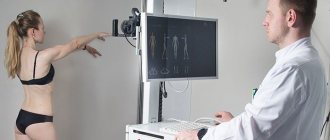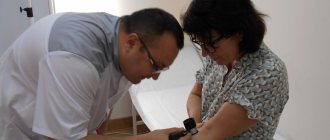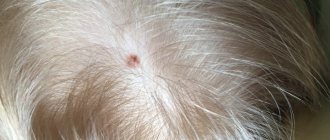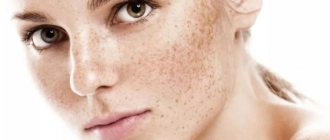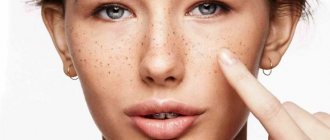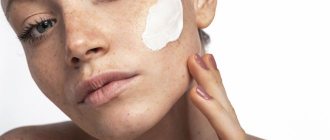A mole (birthmark, nevus) is a benign neoplasm that almost every person has. Some have only a few of them on their body, while others have more than 100. Many moles on the body are a reason for self-examination and regular visits to the doctor, but not for panic.
Many moles on the body
Types of moles
Moles can have different diameters, sizes, shapes and colors. As a rule, the following groups of nevi are distinguished:
- Flat. Formed in the upper outer layer of the skin, they appear due to a large accumulation of melanocytes - cells that produce the pigment melanin, which determines the color of the skin and the possibility of tanning.
- Convex. They appear deep in the lower layer of the skin, can be lumpy or smooth, and are often covered with hairs.
- Dark spots. They are a consequence of the uneven distribution of melanin in the skin and can appear both at birth and later.
- Hemangiomas. Vascular formations can be smooth or protruding, reaching sizes of more than 2 centimeters.
- Blue. They are quite rare, their color can range from blue to dark blue, such moles are quite large in diameter and dense in structure.
How do the sun's rays affect the skin?
In small quantities - positive. “Sunlight is necessary for the synthesis of vitamin D and has a beneficial effect on mood. However, ultraviolet (UV) radiation causes a number of acute and chronic harmful effects on human skin, including sunburn, photoaging and skin cancer,” warns Svetlana Turbovskaya, PhD, allergist, immunologist, dermatovenerologist, head of the department of pediatric dermatology of the European Medical Center (EMS).
In some cases, prolonged exposure to the sun may cause skin pigmentation and moles. What is the difference? “Moles are round or oval, raised or flat spots on the skin with clear boundaries, often appearing singly throughout the year. While pigmentation is usually lighter in color than moles, it is large in size, irregular in shape and appears after skin damage and sun exposure,” adds Svetlana Turbovskaya.
Causes of moles
Often moles appear for the following reasons:
- Under the influence of ultraviolet rays. Prolonged exposure to direct sunlight disrupts the distribution of melanin pigment in the skin, which leads to the accumulation of this substance in certain areas - tanning or the formation of moles.
- With hormonal imbalance. During pregnancy and menopause, melanin synthesis is disrupted, resulting in the formation of birthmarks that can disappear on their own.
- Under the influence of radiation, including x-rays. Dark birthmarks form on the areas of the skin affected by the rays.
- With cardiovascular diseases, small red formations appear on the body.
- In case of disruption of the pancreas and liver. During the period of exacerbation of the disease, moles may appear in the upper part of the body, disappearing without a trace during the remission stage.
- With hereditary predisposition. Skin characteristics are established during the development of the fetus during pregnancy.
- When the immune system is weakened.
Above are only the main causes of birthmarks. Only a doctor after an examination can identify the exact prerequisites for the appearance of formations in a short period of time.
Many large and small moles on the body: is it dangerous?
New moles can appear anywhere: face, scalp, stomach, back, arms, legs. Their color can also be different - brown, black, red, purple. The shape can be flat, in the form of a spot, or convex. These characteristics have little effect on the risk of melanoma. Only quantity matters, as well as the so-called. danger criteria - asymmetry, edge, color, size and dynamics.
| Criterion | What does this mean, normal indicators | Changes that cause concern |
| Symmetry | To assess symmetry, it is necessary to draw a conditional line along the center of the nevus. If the halves are approximately the same, this is a good sign. | Asymmetry of halves. |
| edge | Clear boundaries of the nevus are considered normal. The edge should normally be even and smooth. | Fuzzy and blurry edges, jagged edges, irregularities. |
| Coloring | It is not the color of the nevus that is assessed, but the uniformity of color. It’s good if the color is uniform, without areas of lightening or darkening. | Uneven color - there are lighter and darker gaps and inclusions. |
| Size | Small formations are considered prognostically more favorable. | The diameter of the neoplasm is more than 6 mm. |
| Dynamics of development | It is very important to monitor the dynamics of neoplasms - how quickly they grow, whether their color and surface change. | Increase in size in a short period of time. The appearance of unpleasant sensations (itching, pain, numbness of the skin). |
A large number of birthmarks is associated with an increased risk of developing melanoma, a malignant neoplasm of the skin. If there are more than 100 moles on the body, the risk of malignancy increases 5 times.
To roughly determine the number of formations on the body, you need to count how many moles are located on 1 arm (hand, forearm, shoulder). If there are more than 7, most likely the total number of nevi is more than 100.
Features of the appearance of moles in adults
Most moles appear on the body by about 25 years of age - as a rule, babies are born with absolutely clear skin, without birthmarks, then by about 6 months the child has the first pigment spots, and during puberty a large number of new formations are formed.
Nevi can also appear at an older age - this is a normal process of changes in the skin, a consequence of excess melanin in the body. They form separately, in groups in a certain area or throughout the body. As a rule, age-related moles can be seen on the face, décolleté and neck, less often on the back, shoulders, and hands.
There are the following types of moles that can appear in adults:
- A black nevus is a benign, dark-colored formation.
- Round, brown growths may be the result of darkening of freckles or burns on thin and pale skin that is not prone to tanning.
- Lentigines are pigmented flat spots, lentil-shaped, with a diameter of up to 3 centimeters. They form in groups due to disruption of the endocrine system.
- Senile hemangioma is a red vascular formation that appears with age as the skin thins.
What is the danger
If an adult or teenager has about 50 nevi, then he has an increased risk of developing cancer than a person who has 10–15 spots. Those people who have many moles on their body should always remember whether it is dangerous and visit a doctor regularly.
Newly formed moles are not dangerous if:
- doesn't itch;
- does not increase in size;
- color does not change;
- there is no discharge of pus or fluid;
- there is no swelling or visible inflammatory process.
In the absence of these signs, it is recommended to independently observe the nevi, and if one of the symptoms appears, immediately go to the doctor. It is important to be careful in areas that are subject to rubbing, scratching or other physical impact, so that the integrity of the mole does not become damaged. If treated incorrectly, an inflammatory process may begin in a torn or completely torn mole, as a result of which the proliferation of cancer cells may become more active.
Particular attention should be paid to birthmarks that are located on the foot and palm. If there is a mole in such a place, it is impossible to avoid rubbing or any other damage that threatens the development of cancer.
Reasons for the appearance of moles in adulthood
The appearance of moles in adulthood may be due to the reasons mentioned earlier, as well as additional factors:
- Metabolism and surface renewal of the skin can provoke the appearance of chloasma - age-related hyperpigmentation with a predominant localization on the face.
- With age, the skin loses elasticity and firmness, and the protective barrier also decreases. All this makes it easier for the human papillomavirus (HPV) to enter the body, which leads to the formation of tumors (warts, condylomas).
- A lack of vitamin K in the body, found in green vegetables, liver, dairy products and eggs, causes blood clotting problems and a weakened immune system. In turn, this can cause the formation of new birthmarks.
Warts and papillomas
What do they look like? Warts and papillomas are viral in nature and have a wide variety of appearance. For example, papillomas can be either flat or “pedunculated”.
Why do they arise? You can often hear that these formations appear on the skin after injuries, but injuries do not play an independent role. The fact is that on unhealthy, unprotected skin (patients, for example, with eczema, atopic dermatitis), the development of warts can occur faster. And in the appearance of papillomas, as a rule, hormonal changes or stress play a large role. But the main significance in the development of both warts and papillomas is a decrease in antitumor and antiviral immunity.
Question answer
Does papillomavirus protect against skin cancer?
How to get rid of it? Papillomas and warts can be removed using a laser or electrocoagulation. Warts also respond well to treatment with antiviral drugs from the interferonogen group; such injections are given only by a doctor. It happens, although quite rarely, that warts go away on their own when immunity increases. This is precisely what the action of interferon-type drugs is aimed at.
Mole enlargement with age
An enlargement of a mole in adulthood and a change in its shape are reasons to consult a dermatologist. Such signs may indicate serious disorders in the body, the degeneration of a benign formation into melanoma - a malignant tumor.
Causes for concern may be the rapid growth of a mole without any reason, an asymmetrical form of formation (blurred or uneven edges), bleeding, the appearance of cracks, bumps or roughness on the surface, a change in color (darkening, redness). In addition, itching, pain or other unpleasant sensations in the mole area are an alarming sign. During the consultation, the specialist will conduct a full diagnosis, including a blood test and, if necessary, a biopsy of the tumor, after which he will be able to accurately determine whether the mole is benign.
It is important to remember that with age, the likelihood of degeneration of education increases significantly. It is not recommended to start the process and ignore these signs, since skin metabolism worsens in adulthood.
How to check the condition of a mole
According to Svetlana Turbovskaya, you can do this yourself using the ABCDE rule.
“A” (from the English asymmetry) - asymmetry. “Danger arises if at least one axis of symmetry cannot be drawn through a mole,” says Svetlana Turbovskaya.
“B” (from the English border) - border. “An uneven, and even more so a jagged or scalloped edge of a mole causes anxiety,” notes Svetlana Turbovskaya.
“C” (from the English color) - color. “Most benign moles are brown (less often flesh-colored),” says Svetlana Turbovskaya. “A deep black color or the appearance of red, blue or white colors may signal the development of melanoma.”
“D” (from English diameter) - diameter. Most often, the size of melanoma exceeds 6 mm.
“E” (from English evolving) - change. Any changes that have occurred to the mole. “The most alarming signs are: bleeding, changes in shape, size, the appearance of a burning sensation, ulceration, hair loss from the surface of the mole, the appearance of persistent inflammation, the formation of dry crusts, the appearance of a glossy surface of the nevus, the disappearance of the skin pattern from the surface of the nevus or the moistness of the mole,” warns Svetlana Turbovskaya.
If at least one of these parameters causes you concern, we recommend visiting a dermatologist.
Ways to remove moles
Nevi can be removed only after consultation with a doctor. Self-removal at home is highly not recommended, as it can lead to the formation of scars, burns, wounds and stimulation of malignant oncological processes.
Today, there are four effective methods for removing benign tumors:
- Laser, which allows you to get rid of even deeply ingrown growths.
- Surgical, used to remove hanging and large moles.
- Radio wave, which helps to achieve results in just one procedure.
- Cryodestruction, characterized by absolute painlessness.
On the portal you will find a selection of clinics where you can get rid of a mole quickly, painlessly and inexpensively. Qualified dermatologists, the latest diagnostic methods and a high level of service are at your service.
Dark spots
What do they look like? Pigment spots are a fairly large group of formations, freckles also include them. Pigment spots differ from moles in the absence of convex growth.
Why do they arise? The nature of age spots can be different: they can consist of melanocytes, or they can consist of nevoid tissue. Pigment spots can be either congenital or appear during life as a result of insolation.
Most age spots do not cause any concern. But there are also malignant forms, for example Dubreuil's malignant melanosis.
How to get rid of it? If age spots consist of nevoid tissue, then such elements are very difficult to remove, and, as a rule, there is no point in touching them. But it is easy to get rid of pigment spots with melanocytes using laser methods.
Not a speck! How to deal with freckles? More details
Relationship between the number of moles and the risk of melanoma
There is a lot of research on this issue. If you start reviewing everything, you will end up with a long and boring article that you will not be interested in reading, and I will not be interested in writing.
I have selected some of the largest studies that will help us form our own opinion on this issue.
However, before considering research data, let’s move from the folk concept of “mole” to the medical concept of “nevus”.
